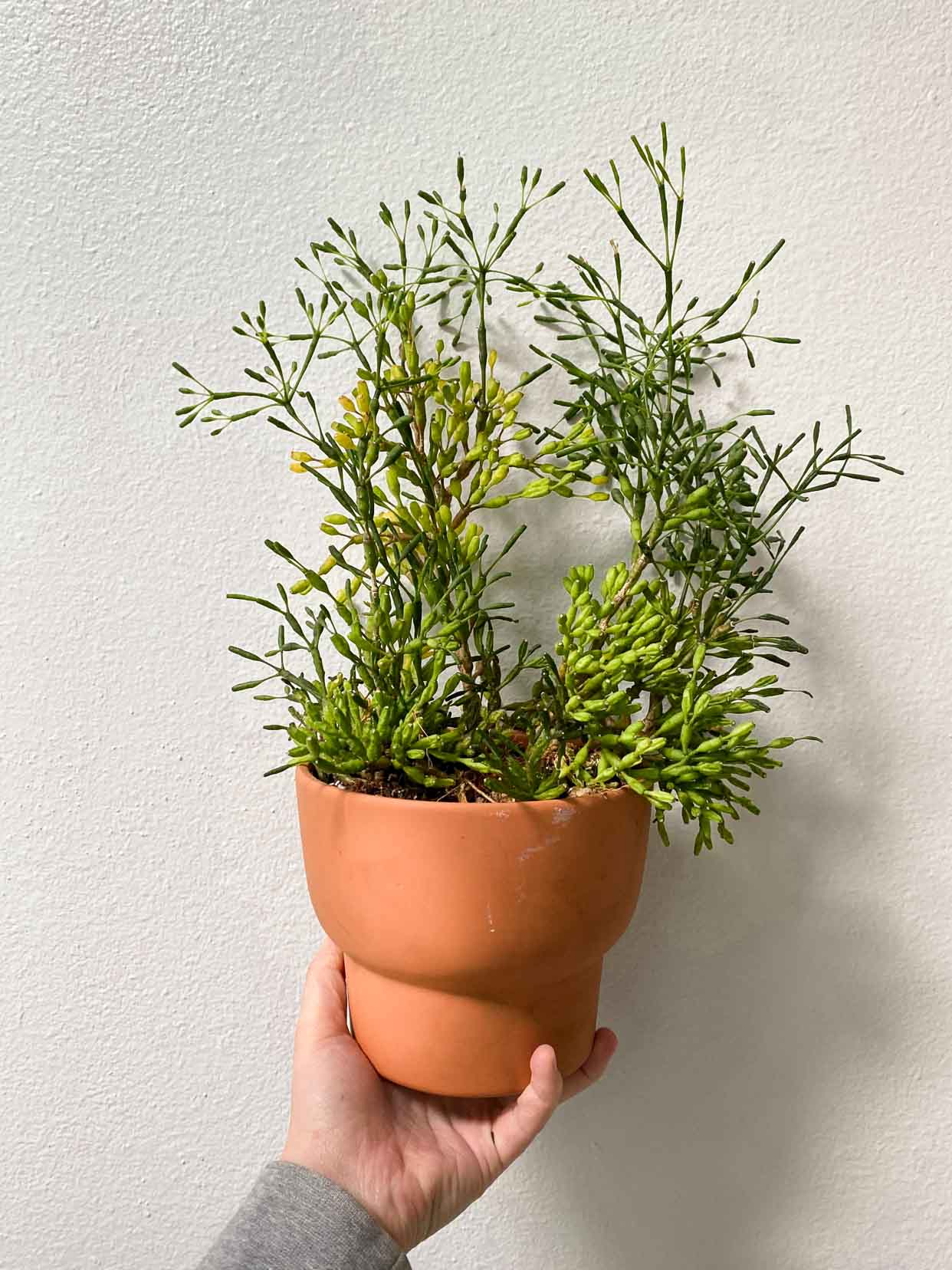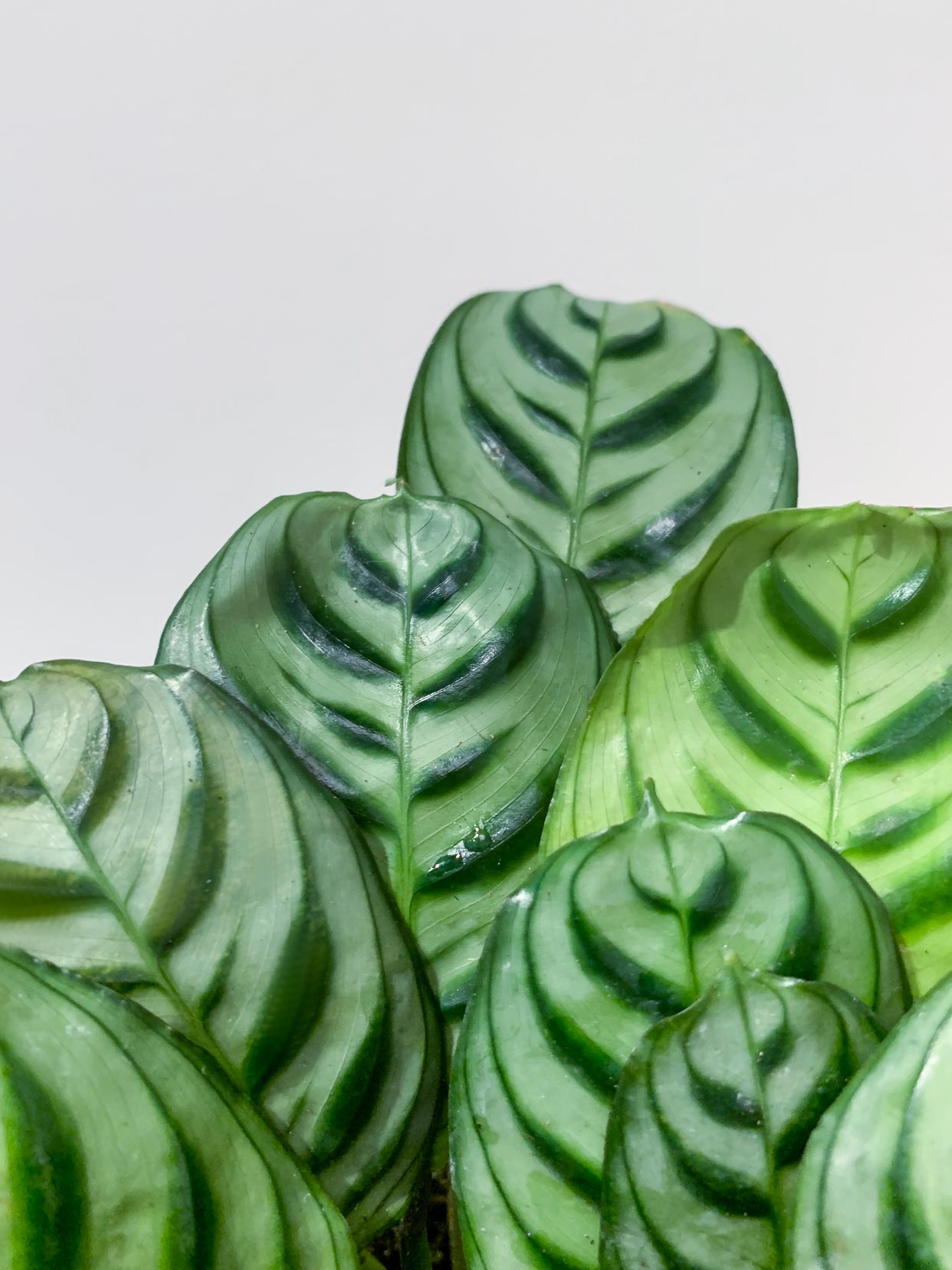As we get into the spirit of fall, we are lighting candles, curling up in a cozy blanket, and sharing our top 10 creepy plants you will want to haunt your house this season.
The botanical world never disappoints with its mystery and magic. This collection explores oddity plants that come back from the dead, digest small animals, and come in frightening shapes and colors!
1 - Amorphophallus titanum -
Corpse Flower
The first to make our list of creepy plants is of course the infamous corpse flower. This plant has the world’s largest unbranched inflorescence. It gets its name from the chemical odor the plant’s spadix emits that has an eerie resemblance to rotting flesh. They do this to attract insects that eat dead animals or lay eggs in rotting meat. The odor increases from late evening into the middle of the night luring insects to come and pollinate this cleverly disguised flower.
2 - Selaginella lepidophylla - Resurrection Plant
The Resurrection Plant is a fascinating prehistoric spikemoss. This desert species adapted itself so well that it can survive near death, allowing it to go long periods of time without any water. The name comes from its ability to "resurrect" itself as it dries up and curls into a ball and then unfurls and comes back to life when exposed to moisture.
3 - Mammillaria elongata ‘Cristata’ - Brain Cactus
Native to central Mexico, this creepy plant has a unique crested shape resembling brains or worms. Weirdly enough this growth pattern did not happen through cultivation but rather through a rare mutation that happens when cacti get damaged from their central growth point. Potted up, this plant would look right at home in a mad scientist’s laboratory.
4 - Lithops Sp. - Living Stones
Nicknamed "Living Stones," Lithops species are strange and unusual succulents that look like they belong in an alien garden. Their hoof-like shape splits in the middle where new growth emerges and outer leaves wither away. Native to deserts in south Africa they adapted to survive extreme drought and heat. The tops of the leaves are actually translucent allowing sunlight to penetrate into the base of the plant protecting themselves from burning while saving water and photosynthesizing.
5 - Begonia ‘Pink Mink’
Next on our list is a unique Angel Wing Begonia that has pink leaves with silver splashes called Begonia 'Pink Mink'. The leaves are something you would expect to see on a winged reptile or supernatural creature. Its unique colors and leaf shape have us thinking of vampire lairs and lounging among beautiful red velvet robes in the candlelight.
6 - Ctenanthe burle-marxii -
Fishbone Prayer Plant
Look closely enough and you just might see this creepy plant moving! Called Ctenanthe burle-marxii, and part of the Prayer Plant family (Marantaceae), these understory plants move their leaves throughout the day to protect themselves from harsh sunlight. The name ‘Fishbone’ comes from the alternating striped pattern on the top of the leaves that resemble a fish skeleton. Maybe a favorite garden companion of a sea witch.
7 - Carnivorous plants - Nepenthes, Sarracenia and
Dionaea
Perhaps the most famous creepy plant lies in the many carnivorous species you can grow and feed in your home. Native to acidic bogs and places with Nitrogen deficient soil these plants adapted to get Nitrogen elsewhere, by digesting insects and even sometimes small animals. Some of the most famous for indoor houseplants being Venus Flytraps and Pitcher plants. Set one up in your kitchen to help you get rid of those pesky fruit flies.

8 - Medusa’s Head - Euphorbia flanaganii
This South African succulent has an underground stem and snake-like branches that grow flat on the ground. This bouquet of green serpent tentacles earns it the nickname ‘Medusa’s head’ and while looking at them might not turn you into stone the leaves contain a toxic sap so keep this creepy plant out of the reach of pets and small children.

9 - Philodendron ‘Bloody Mary’
Careful not to say the name of this houseplant three times alone in a dark room. This easy to grow Philodendron has a gothic draw to its unique leaf coloring. New leaves will emerge orange and as they harden off they will turn blood red and finally a deep dark green. Giving us autumn colored foliage all year long.
10 - Hatiora salicornioides - Dancing Bones Cactus
Finally on our list of creepy plants is a species of Hatiora native to eastern Brazil. Among the many common names for this flowering jungle cactus is dancing bones or drunkard's dream as the leaves look like bones or little liquor bottles. A fitting potted plant for a sunken pirate’s ship.

Trick a friend or treat yourself to a creepy plant this October. Maybe one of your potted plants has some frightening facts hidden in their evolutionary history. What green ghouls are haunting your house?
By: Bee Oxford



